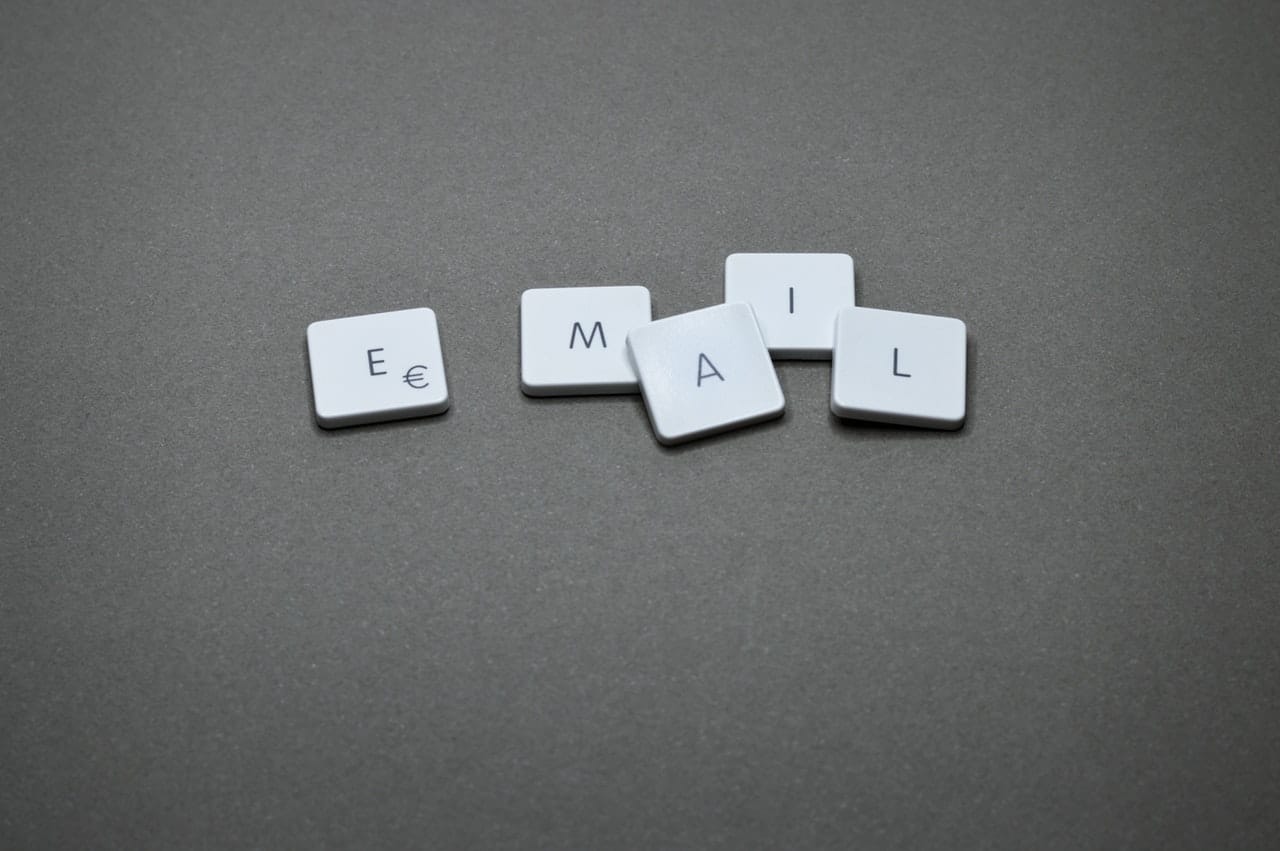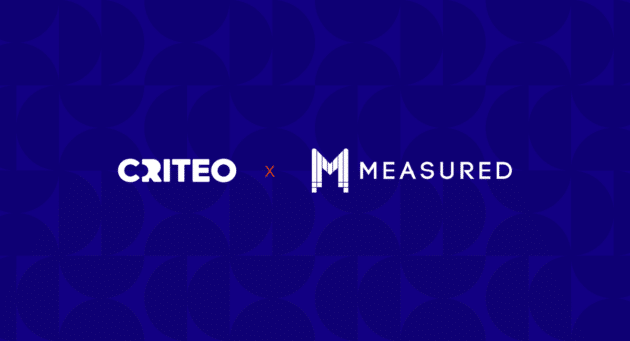Online shopping or ecommerce has made purchasing any product very simple and brought the entire world right to the customer’s doorstep. It eliminated the geographic and time constraints that came with shopping in brick-and-mortar stores, which meant the customer could place an order from anywhere at any time and get their products delivered. In fact, ecommerce sales for 2017 were clocked at $2.3 trillion and is predicted to grow to $4.5 trillion by 2021.
The thriving ecommerce industry depends on return customers more than newcomers as returning customers generate as much as 40% of a store’s revenue and it costs less to retain a customer compared to acquiring a new customer. Thankfully, when it comes to customer acquisition or retention, 80% of marketers consider email as the preferred marketing channel, right from onboarding a customer to delighting them post-purchase.
1. Email is the passport to the digital realm.
Be it for creating a profile on your website or logging onto a social media platform, a customer needs to have an email address as a point of contact in the digital realm. So, collecting the email address of your subscriber opens the opportunity to open a conversation with them.
2. Emails act as bookmarks for your customers to know your brand.
When a prospect visits your website, they may know very little about your brand. They may not make a purchase on their first visit and choose to explore your website before a well-timed opt-in form invites them to subscribe. As soon as they become a subscriber, you onboard them by sending a welcome email and nurture them with relevant information about your brand so that they have enough information to make a purchase. This way, you can cater to them through different emails, each containing specific information based on their preferences.
3. Email creates a one-to-one connection with your prospects and customers.
In the world of social media and chat bots, an email has the power of reach. While a social media post is pushed to all your followers as soon as you post, but it is only visible to those online at the moment. For the rest, the post is lost in a flood of the other posts. On the other hand, an email will always be available for reading in your subscriber’s inbox.
4. Email is permission based marketing channel.
When someone subscribes to your brand, they consent to remain updated with promotions and receive the email newsletter. Additionally, owing to recent implementation, marketers tend to send a confirmation email or other double opt-in practices to gauge the interest level of the subscriber.
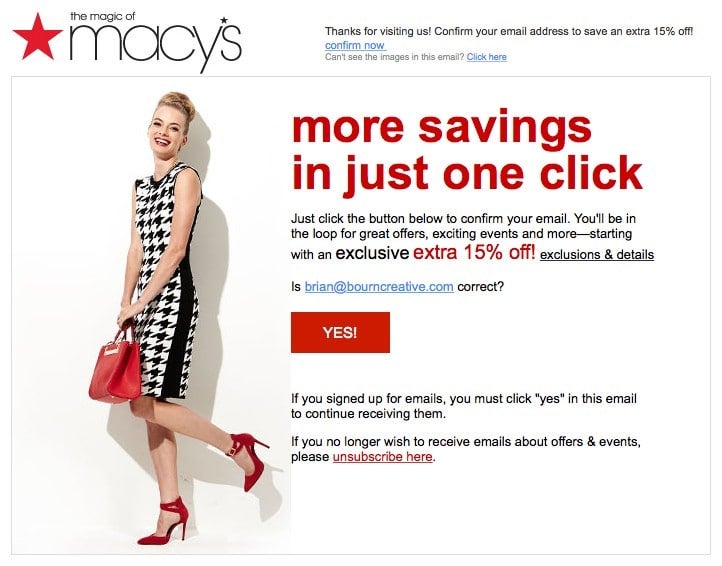
In the above email by Macy’s, they have confirmed the email address and incentivized the confirmation
5. Emails can be automated.
DMs may be the inbox of social media, but an email still stands out. While DMs also holds a copy of the conversation between you and your customer, each conversation needs to be manually conducted. In the case of an email, it can be automated to follow a pre-defined workflow.
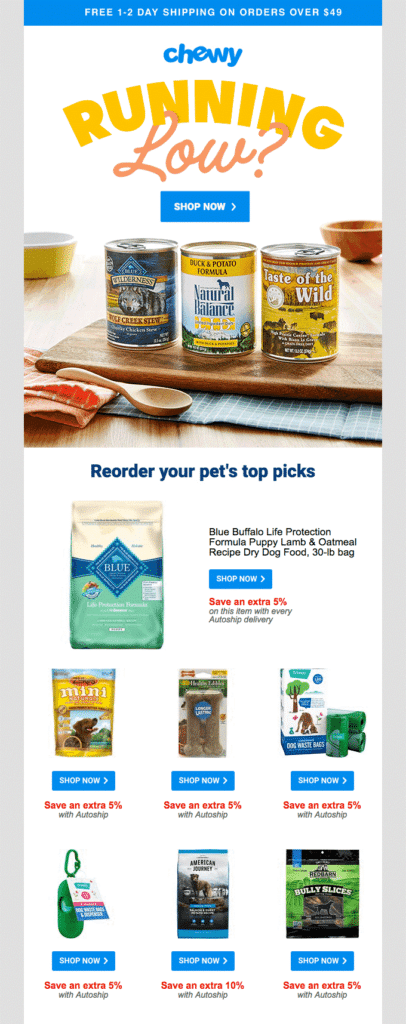
The above email by Chewy is sent to the customer after pre-defined duration has passed since their previous purchase
While chat bots can also automate the conversation, the human touch in the conversation gets missed out. This brings us to…
6. Email enables personalized conversation.
Even though emails are sent using automation, using tools like Merge Tags, Automation Engine, Dynamic Content Blocks, you can tailor the email copy to match the customer’s journey for better personalization. This helps to take the relationship with the customer to the next level of personalization.
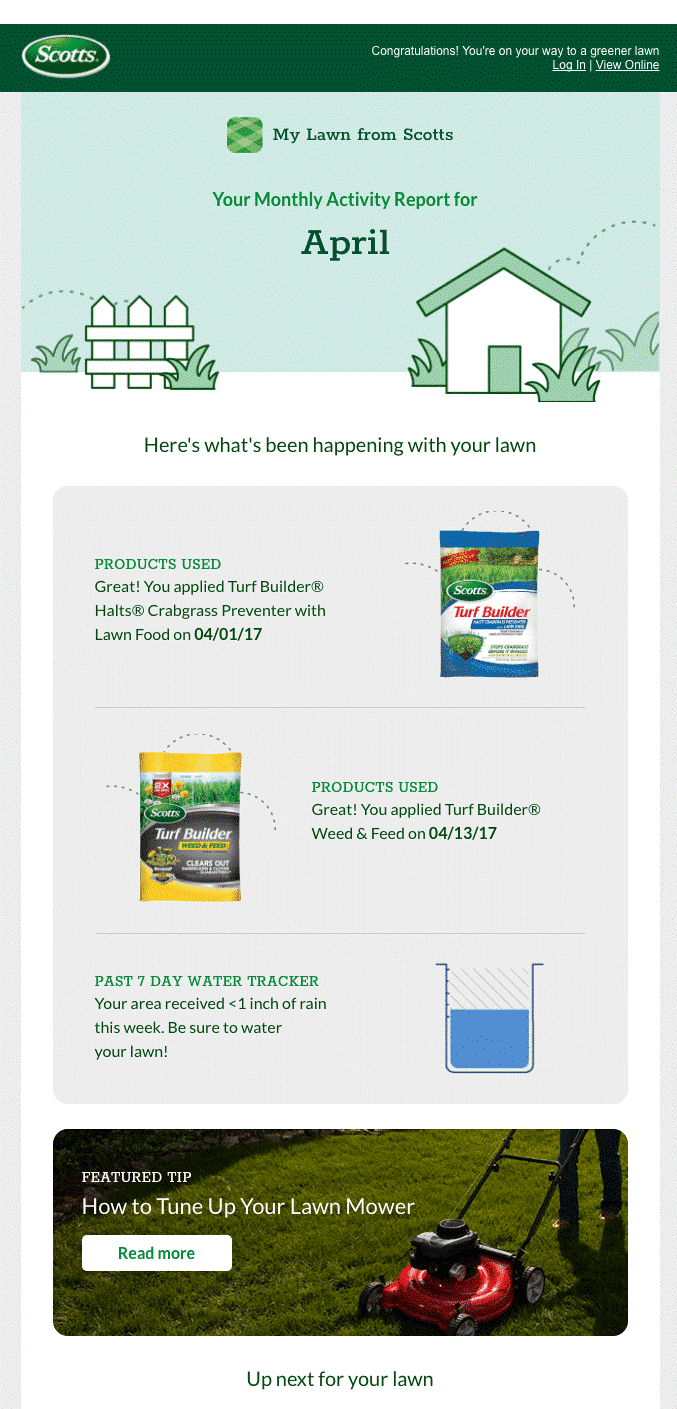
In the above email by Scotts, the data is personalized based on the data collected from their mobile application as well as local weather information.
7. Re-target better with timed cart abandonment email.
Cart abandonment is a grave issue in the e-commerce industry. The typical shopping cart abandonment rate for online retailers varies between 69% and 80%, with an average of 75.6% (Source).
You can lure back shoppers by sending a reminder in form of a cart-abandonment email moments after the cart has been abandoned. In fact as per a study by Barilliance, at least 1 out of 5 shoppers make a purchase after opening a cart-abandonment email.
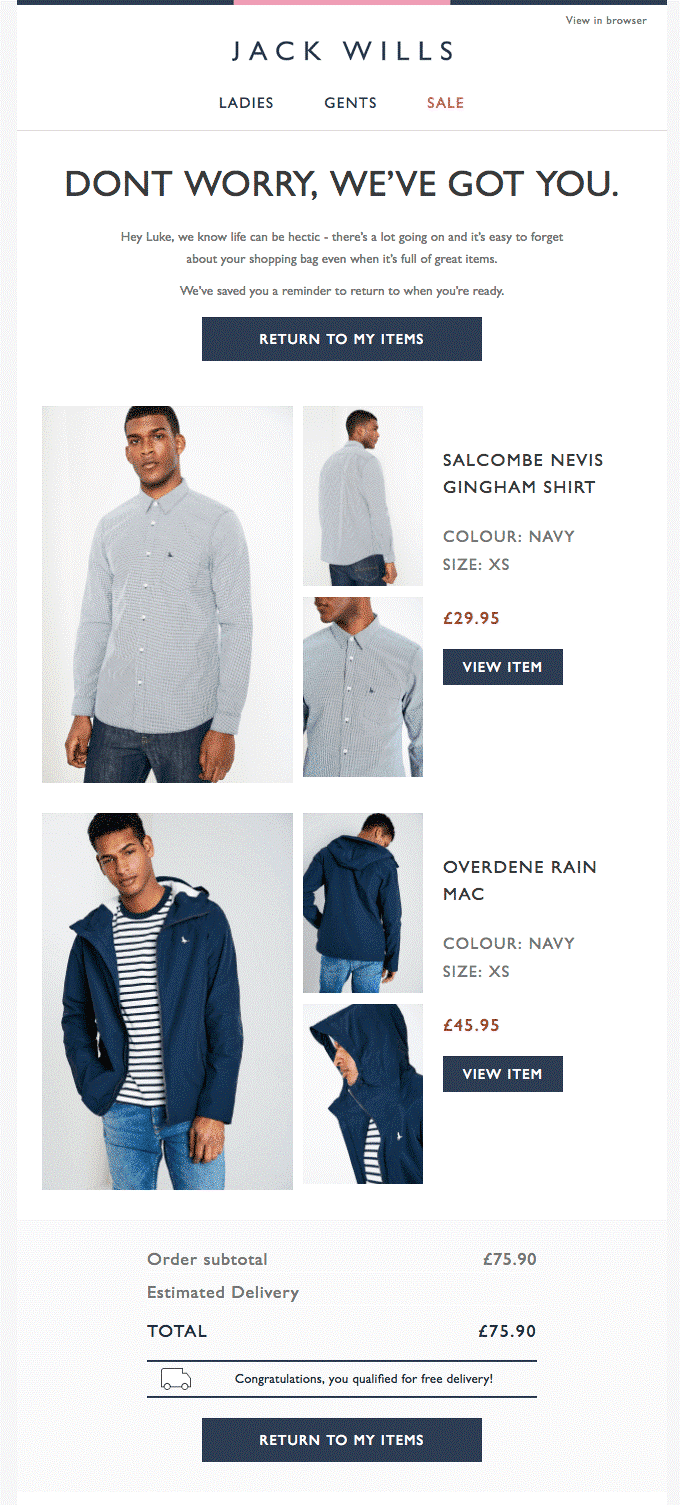
As showcased in the above email by Jack Wills, by reminding the customer about the product in their cart and a link to go back to the cart can help counter losses owing to cart abandonment.
8. No limits for creativity.
A subject line in an email acts as the hook to the suspense revealed in the email copy. This is a great opportunity to showcase creativity to build good user experience.
Brands like Chubbies and Urban Outfitters create suspense by using cryptic words in their subject lines. This way, the customer is intrigued to check out what the email copy contains.
Also modern HTML emails are styled using CSS animation so email marketers tend to include interactivity wherein the message in the email is only revealed to the customer when there is a user interaction. This way, more customers will be motivated to engage with your emails.
Wrapping Up
Ever since the potential of email as a marketing channel was discovered in the 1990s, marketers have been relying on it for having meaningful conversations and building lasting relations with their customers. As the e-commerce industry grows multi-fold every year, not including email marketing in your marketing strategy is similar to closing shop during peak business hours.







